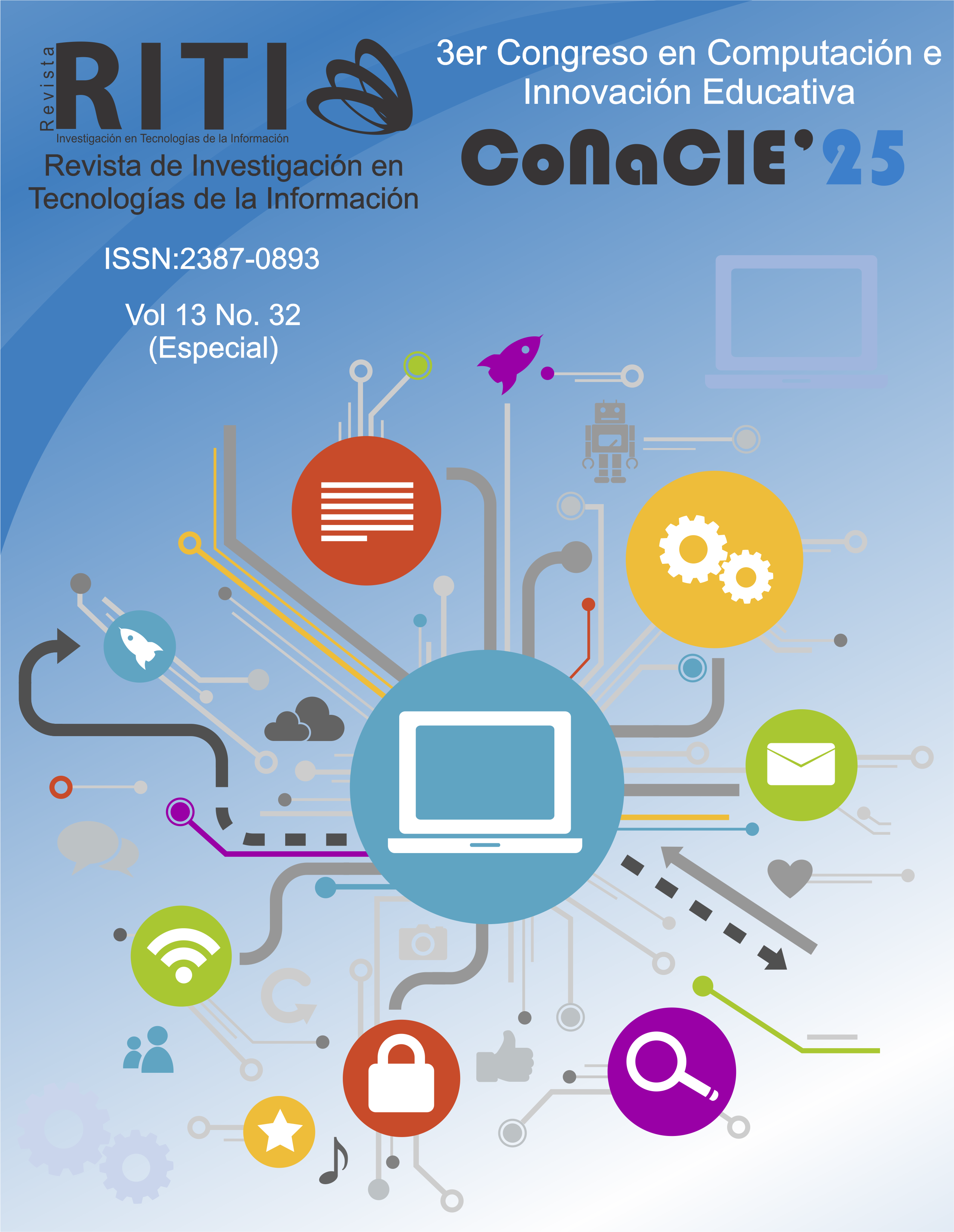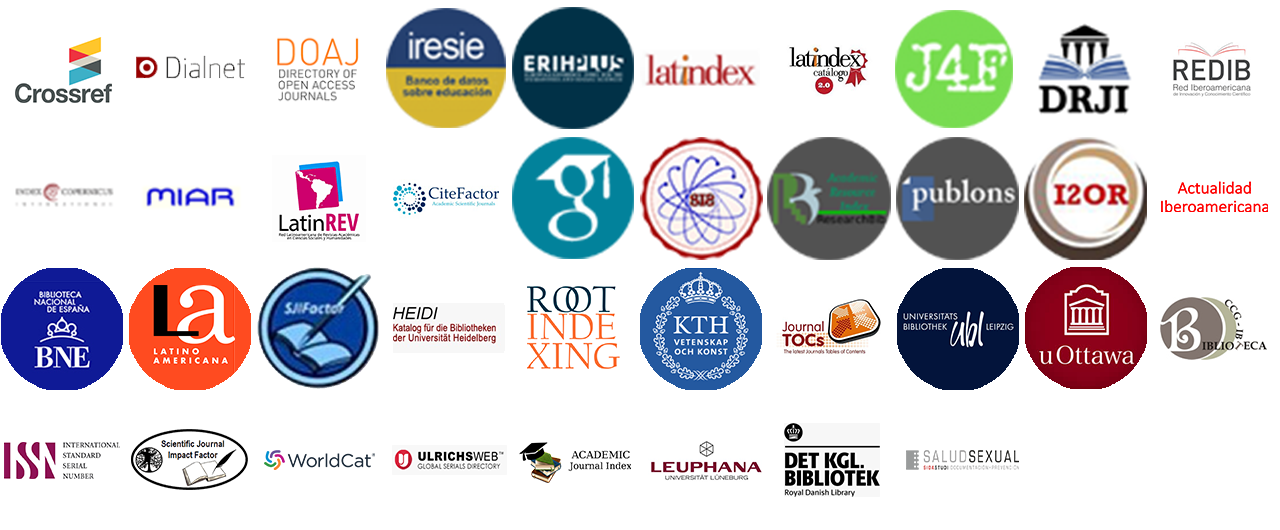Classification of the FBSI dataset using neural networks
DOI:
https://doi.org/10.36825/RITI.13.32.006Keywords:
Precision Livestock Farming, Feed Bunk Managment, Artificial Intelligence, Dataset FBSI, InceptionV3Abstract
This paper presents the application of the InceptionV3, VGG16, ResNet50 models, and a simple convolutional neural network (CNN) to analyze the FBSI (Feed Bunk Score Image) dataset composed of 1,511 images grouped into six classes. The main objective is to identify the model with the best F1 score for image classification in the context of precision livestock farming. The study is based on a comparative analysis of pre-trained models. The characteristics of the FBSI dataset are described, as well as the equipment configuration, the methodological procedure, as well as the necessary software and programming language, validating the hypothesis that the feed bunk managment image classification system achieves a performance greater than 85%.
References
Ceconi, I., Ferreyra, S., Méndez, D., Davies, P. (2018). Terminación a corral: lectura de comederos y su impacto sobre resultados productivos. Revista Ganado, 50-54. https://primianutricion.com.ar/wp-content/uploads/2019/08/inta_dg2018_ceconi_terminacion_corral_lectura.pdf
Rusche, W. (2023). Feed Bunk Management. https://extension.sdstate.edu/feed-bunk-management
Dorea, J. R. R., Cheong, S. (2019). PSXI-2 A computer vision system for feed bunk management in beef cattle feedlot. Journal of Animal Science, 97(Supplement 3), 389–390. https://doi.org/10.1093/jas/skz258.776
Marques de Paula, B., Rezenda da Silva, G., Ferreira, S. E., Coimbra Maia, B. L., Gomes Almeida, M. E., Soares Júnior, V. M., da Silva Maciel, L. M., Chaves, A. S. (2023). Dataset of feed bunk score images of cattle feedlot. Data in Brief, 47, 1-6. https://doi.org/10.1016/j.dib.2023.108996
Marques De Paula, B. (2023). Modelo de aprendizado para classificação de escore de cocho em confinamentos de bovinos de corte com base em imagens [Tesis de Maestría]. Universidade Federal De Minas, Montes Claros, Brasil. https://hdl.handle.net/1843/69269
Arévalo Zenteno, M. D. (2021). Clasificación de la fruta del Durazno mediante Redes Neuronales Convolucionales [Tesis de Doctorado]. Universidad Autónoma del Estado de México. Texcoco, Estado de México.
Heras, D. (2017). Fruit image classifier based on artificial intelligence. Revista Killkana Técnica, 1 (2), 21–30. https://killkana.ucacue.edu.ec/index.php/killkana_tecnico/article/view/79/127
Zhang, Y., Wu, L. (2012). Classification of fruits using computer vision and a multiclass support vector machine. Sensors, 12 (9), 12489–12505. https://doi.org/10.3390/s120912489
Olguín-Rojas, J. C., Vasquez-Gomez, J. I., López-Canteñs, G. de J., Herrera-Lozada, J. C. (2022). Classification of apples with convolutional neuronal networks. Revista Fitotecnia Mexicana, 45 (3), 369–378. https://doi.org/10.35196/rfm.2022.3.369
Rashid Methun, N., Yasmin, R., Begum, N., Rajbongshi, A., Islam, E. (2021). Carrot Disease Recognition using Deep Learning Approach for Sustainable Agriculture. International Journal of Advanced Computer Science and Applications (IJACSA), 12 (9), 723-741. https://dx.doi.org/10.14569/IJACSA.2021.0120981
LeCun, Y., Bottou, L., Bengio, Y., Haffner, P. (1998). Gradient-Based Learning Applied to Document Recognition. Proceedings of the IEEE, 86 (11), 2278-2324. https://doi.org/10.1109/5.726791
Jerubbaal, J. L., Rajkumar, J., Mahesh, B. (2019). Impact of image size on accuracy and generalization of convolutional neural networks. International Journal of Research and Analytical Reviews, 6 (1), 70- 80. https://n9.cl/sqkuc
Géron, A. (2019). Hands-on machine learning with Scikit-Learn, Keras, and TensorFlow: concepts, tools, and techniques to build intelligent systems. O’Reilly Media, Inc. https://n9.cl/kntzd
Chollet, F. (2017). Xception: Deep Learning with Depthwise Separable Convolutions. Conference on Computer Vision and Pattern Recognition (CVPR). Honolulu, HI, USA. https://doi.ieeecomputersociety.org/10.1109/CVPR.2017.195
Downloads
Published
How to Cite
Issue
Section
License
Copyright (c) 2025 Revista de Investigación en Tecnologías de la Información

This work is licensed under a Creative Commons Attribution-NonCommercial 4.0 International License.
Esta revista proporciona un acceso abierto a su contenido, basado en el principio de que ofrecer al público un acceso libre a las investigaciones ayuda a un mayor intercambio global del conocimiento.
El texto publicado en la Revista de Investigación en Tecnologías de la Información (RITI) se distribuye bajo la licencia Creative Commons (CC BY-NC
 ), que permite a terceros utilizar lo publicado citando a los autores del trabajo y a RITI, pero sin hacer uso del material con propósitos comerciales.
), que permite a terceros utilizar lo publicado citando a los autores del trabajo y a RITI, pero sin hacer uso del material con propósitos comerciales.



